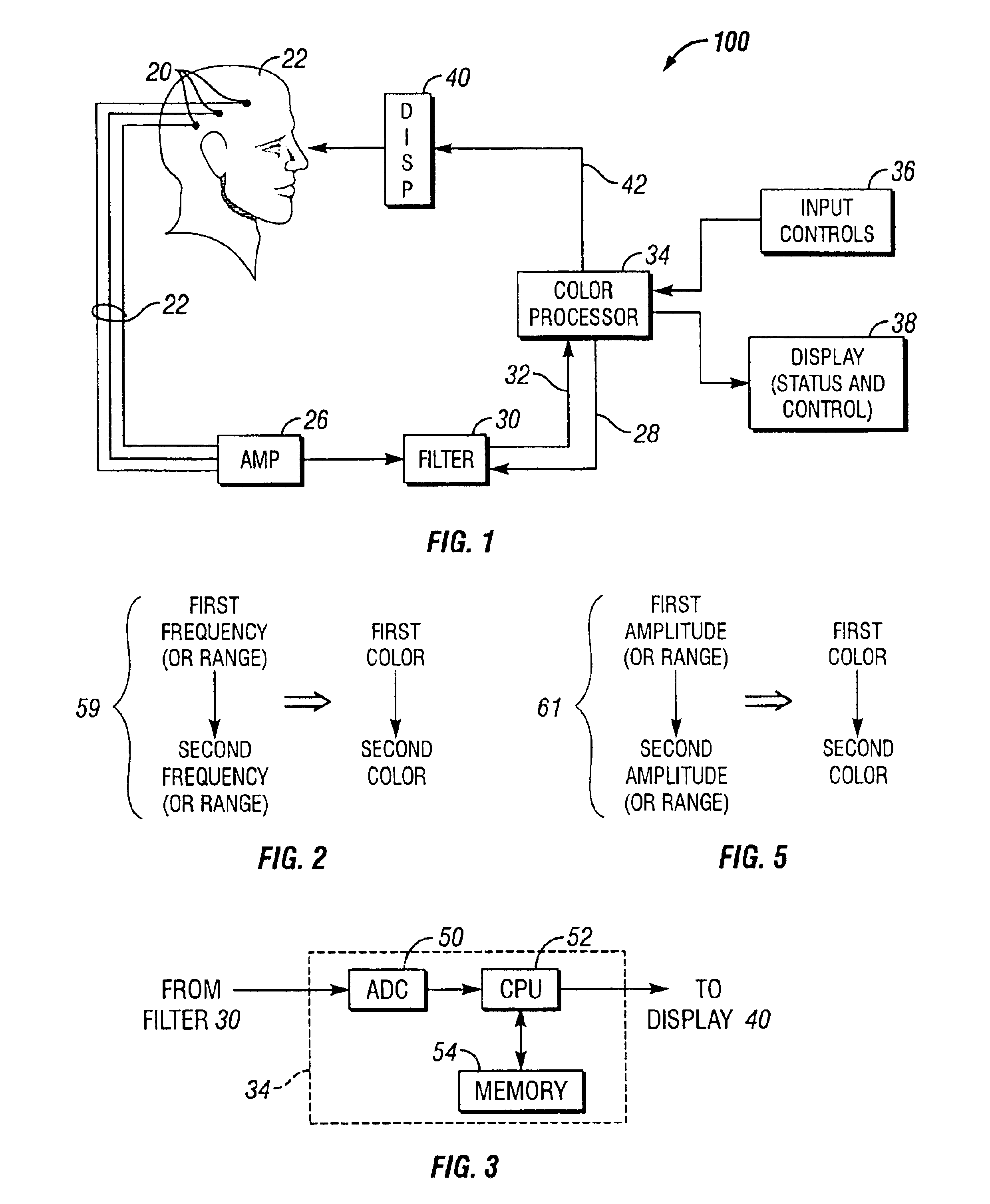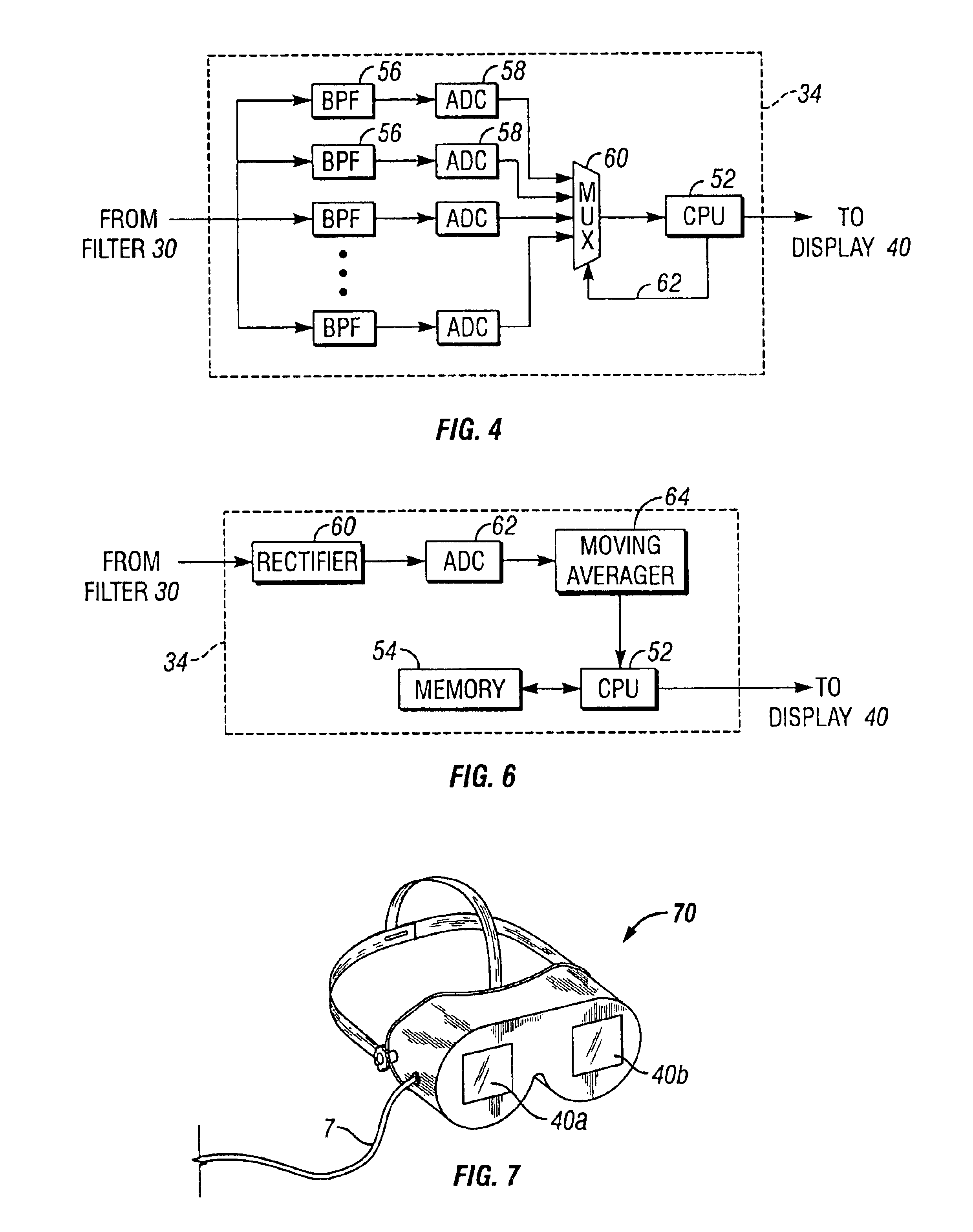Color-based neurofeedback
a neurofeedback and color technology, applied in the field of color in the neurofeedback system, can solve the problems of difficult for patients to reconcile and process in a useful manner, conventional feedback techniques typically require more conscious effort, and the ability of the technique to display the full range of frequencies is generally self-limiting, so as to minimize the mess and time involved, and enhance the neurofeedback experience
- Summary
- Abstract
- Description
- Claims
- Application Information
AI Technical Summary
Benefits of technology
Problems solved by technology
Method used
Image
Examples
Embodiment Construction
The problems noted above are solved in large part by a neurofeedback technique and apparatus that uses color as its feedback cue, and preferably that employ non-adhesive sensors. A preferred embodiment of the invention includes an amplifier that receives EEG or magnetoencephalogram ("MEG") signals from electrodes on or adjacent to the person's scalp, a low or band pass filter, a color processor and a display unit. The color processor converts an aspect of one or more channels of the person's EEG signal(s) to a color and shows that color to the person on the display. The aspect of the EEG that is converted to color can be the frequency or the amplitude of the person's EEG signal(s). If EEG amplitude is used in the conversion process, the instantaneous, average or peak amplitude can be used. This process is dynamic, meaning that the system repeatedly converts the EEG signal to color while the person is receiving neurofeedback training.
By using color as the feedback signal, a plurality...
PUM
 Login to View More
Login to View More Abstract
Description
Claims
Application Information
 Login to View More
Login to View More - R&D
- Intellectual Property
- Life Sciences
- Materials
- Tech Scout
- Unparalleled Data Quality
- Higher Quality Content
- 60% Fewer Hallucinations
Browse by: Latest US Patents, China's latest patents, Technical Efficacy Thesaurus, Application Domain, Technology Topic, Popular Technical Reports.
© 2025 PatSnap. All rights reserved.Legal|Privacy policy|Modern Slavery Act Transparency Statement|Sitemap|About US| Contact US: help@patsnap.com



